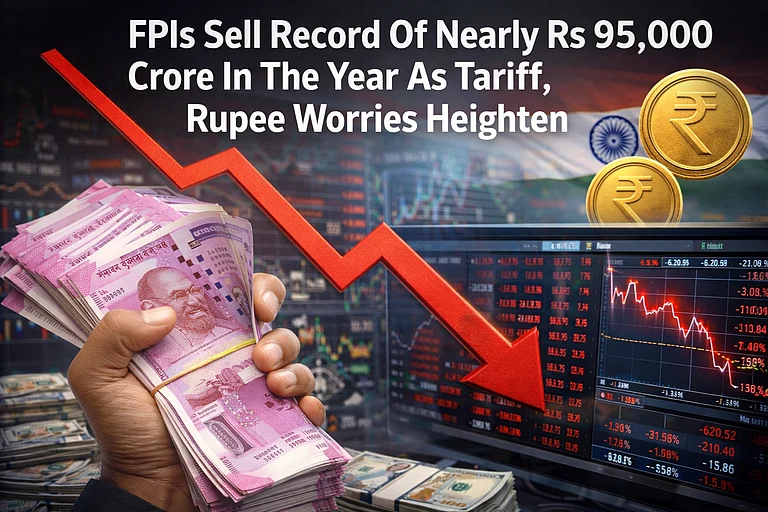The Reserve Bank of India (RBI) on Friday kept the benchmark repo rate unchanged while maintaining its hawkish stance as retail inflation dropped below 7 per cent. Experts say it could be the right time to invest in long-term fixed deposits.
RBI's monetary policy committee (MPC) has kept the repo rate at 6.5 per cent for the fourth straight time after increasing it by 250 basis points between May 2022 and February 2023.
Regarding quarterly inflation projections, it revised the estimate for the September quarter from 6.2 per cent to 6.4 per cent and for the December quarter from 5.7 per cent to 5.6 per cent.
However, inflation continues to be above RBI's tolerance band of 4 per cent plus minus 2 per cent. Therefore, the RBI iterated on its hawkish stance during the MPC review meeting, says Anshul Gupta, co-founder and chief investment officer of Wint Wealth.
Gupta says, "From retail investors' standpoint, we are almost at the peak of the interest rate hike cycle. Thus, over the next 3-6 months, they should lock their funds in long-term fixed deposits at higher interest rates." He adds that depending on the goal and timeframe, they can stagger their investment into smaller FDs across different commercial and small finance banks and NBFCs.
Says Venkatakrishnan Srinivasan, founder of Rockfort Fincap LLP, a financial advisory firm, "FD rates, too, have peaked, and a few banks have, in fact, reduced the rates in some of their long-duration FDs with the expectation of rate cuts next year. That's why they are offering attractive rates for 1-3 years and then reducing the rates for FDs beyond three years."
With the RBI maintaining its stance on tight liquidity in the banking system, it is expected that banks may step up their efforts to borrow money through the FD route at the current levels. Hence, it could be an opportune time for investors to lock in their FD rates, Srinivasan adds.
RBI has been reiterating that excessive liquidity risks both price and financial stability. Highlighting this view, Srinivasan says, "RBI MPC has also shown concerns that banks have preferred to place funds under the overnight SDF facility instead of offering them in the main 14-day variable rate reverse repo (VRRR) operations. The elevated levels of MSF borrowings amidst substantial funds parked under SDF is symptomatic of skewed liquidity distribution."
Gupta says, "The elevated crude oil prices also pose inflationary risks in the near term. RBI will likely wait and watch for the next couple of quarters before it decides to reduce the rates."
Home loan borrowers, he adds, would do well to stick to their floating interest rate loans for now, even if fixed-rate loans are available at some discount.
Fixed-Income Bond Market Outlook
Gupta said, "Bond markets have already been discounting rate cuts, and 10-year G-sec yields are down by 30 bps from this year's peak levels."
Regarding RBI Governor's remarks on bond sales in the open market operation (OMO), Srinivasan says, "Our domestic bond yields are reacting to domestic factors and not really reacting to international factors." The governor stated that OMO sales have nothing to do with Bond Index Inclusion, which is part of their domestic liquidity management.
"VRRR auction results will be the key today. Watch out for this space. Last time, it was only around Rs 5,000 crore parked out of Rs 50,000 crore announced," he added.
With RBI's rate decision, the standing deposit facility (SDF) rate remains at 6.25 per cent, and the marginal standing facility (MSF) rate and the bank rate at 6.75 per cent.













